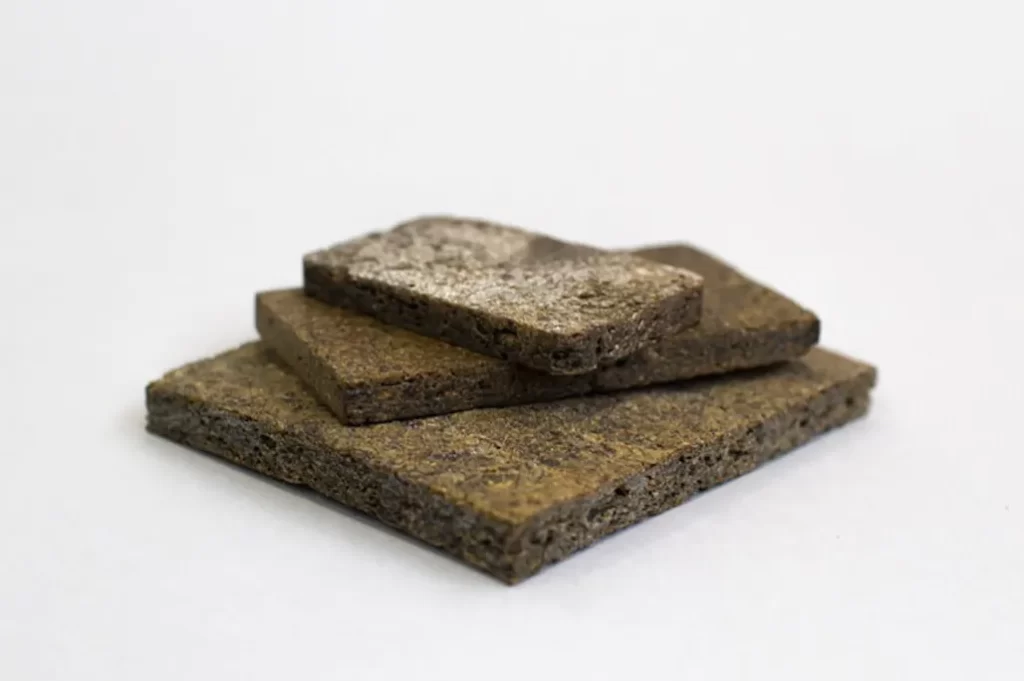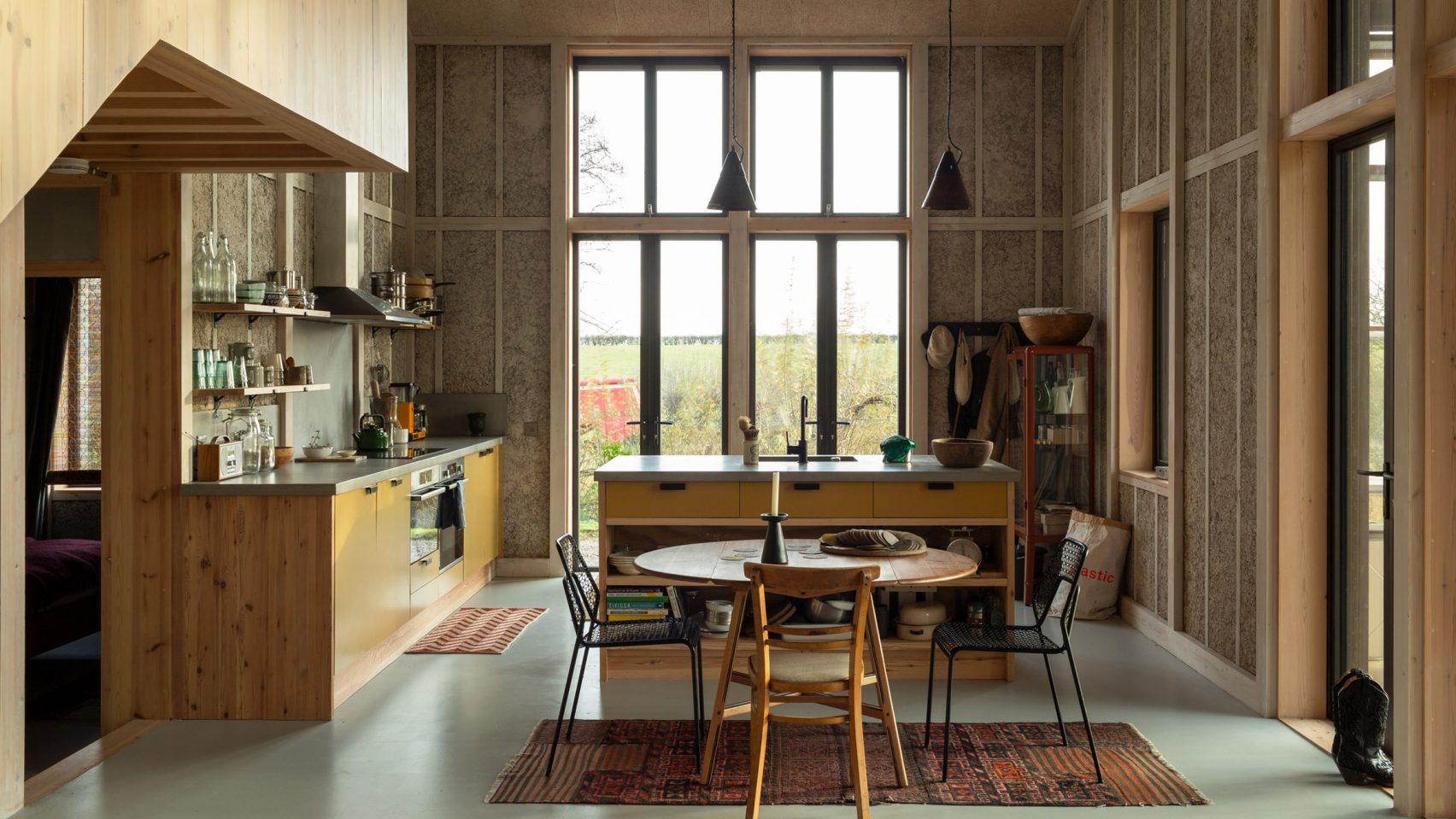The search is on for new sustainable
In a world where sustainability has become an urgent concern, the search for innovative and eco-friendly building materials has taken center stage. Every day brings forth exciting discoveries that hold the promise of revolutionizing the construction industry. From bio-composites crafted from natural elements to the transformative utilization of waste materials in essential building components, the possibilities seem boundless. These remarkable findings captivate architects and builders worldwide, showcasing their potential to shape a better and greener future.
Bio-composites: Nature’s Potential
One of the most intriguing developments in sustainable building materials involves the creation of bio-composites using natural elements. These bio-composites are innovative materials that combine organic constituents with a binding agent to form a durable and environmentally friendly alternative to traditional construction materials.


Potato peels, a widely available waste product in the food industry, have emerged as a surprising resource for bio-composite production. Through careful processing and treatment, potato peels can be transformed into a fibrous material that serves as a reinforcing component in the composite. When combined with a suitable biodegradable binder, such as a plant-based resin, the resulting bio-composite exhibits excellent strength and stability.
In the realm of architecture and design, bio-composites derived from potato peels offer exciting possibilities. These materials can be shaped and molded into various forms, allowing architects to explore new aesthetic expressions and structural configurations. The lightweight nature of bio-composites makes them suitable for applications where reducing the overall weight of the structure is desirable, such as in portable or temporary constructions.

Bioplastic architecture design is another fascinating avenue within the realm of bio-composites. Bioplastics, derived from forest and farm waste, present an eco-friendly alternative to conventional petroleum-based plastics. These biodegradable and renewable materials can be used to fabricate components like panels, membranes, or 3D-printed elements, providing architects and designers with versatile options for sustainable construction. Bioplastic architecture design promotes circularity by enabling the materials to be easily recycled or composted at the end of their life cycle, minimizing environmental impact.
The exploration of bio-composites, including those made from potato peels and bioplastics, showcases the transformative potential of sustainable building materials. By harnessing the power of nature’s elements, we can create durable, aesthetically pleasing, and environmentally conscious structures that contribute to a more sustainable future.
Harnessing the Power of Fungi
Harnessing the power of fungi in the realm of sustainable building materials has gained significant attention in recent years. Fungi, specifically mycelium, the root-like network of filamentous structures, offer unique properties that make them suitable for construction applications.


Here are some key points about harnessing the power of fungi in sustainable building:
1.High-strength and Lightweight Materials: Mycelium-based materials possess remarkable strength-to-weight ratios. They can be grown and manipulated to create lightweight yet strong construction components, such as insulation panels, or even structural elements like beams or bricks. This offers a sustainable alternative to traditional materials like concrete or plastics.
2.Sustainable Production Process: The production process of mycelium-based materials typically involves mixing the mycelium with a substrate (often agricultural waste) and allowing it to grow and bind the components together. This process requires minimal energy and emits fewer greenhouse gases compared to traditional manufacturing processes, contributing to a lower carbon footprint.
3.Biodegradable and Compostable: One notable advantage of mycelium-based materials is their biodegradability. At the end of their lifecycle, these materials can be composted, returning to the natural environment without leaving behind toxic residues. This aligns with the principles of circular economy and waste reduction.
4.Versatile Applications: The versatility of mycelium-based materials allows them to be used in various construction applications. They can be molded into different shapes, integrated into composite materials, or combined with other sustainable elements like natural fibers to enhance their mechanical properties.


While the utilization of fungi in construction is still a developing field, it shows great promise for sustainable and eco-friendly building practices. By harnessing the power of fungi, architects and builders can explore innovative solutions that prioritize environmental stewardship and contribute to a more sustainable future.
Transforming Waste into Building Blocks

A groundbreaking approach gaining traction is the transformation of waste materials into valuable building resources. Construction waste, once considered a burden, can now be repurposed into modular bricks, reducing the strain on landfills. Similarly, wastepaper can be transformed into plasterboard, providing a sustainable alternative to conventional options.
Additionally, incorporating hemp fibers into concrete results in a durable and eco-friendly composite, further expanding the range of possibilities for sustainable construction.


Lightweight Nature: One notable advantage of hemp fibers is their lightweight nature. Unlike traditional reinforcement materials like steel, hemp fibers are significantly lighter. This characteristic reduces the overall weight of the concrete, which is particularly beneficial for applications where weight reduction is desirable, such as in precast concrete elements or structures with load-bearing limitations.
Thermal and Acoustic Insulation: Hemp fibers exhibit good thermal and acoustic insulation properties. When used in concrete, they contribute to improving the energy efficiency and acoustic performance of buildings. This can lead to reduced heating and cooling costs and enhanced occupant comfort.
Versatile Applications: Hemp fiber-reinforced concrete can be used in various construction applications, including walls, floors, beams, and panels. It can be cast or sprayed into molds, offering flexibility in design and construction processes.
By incorporating hemp fibers into concrete, the construction industry can leverage their strength, sustainability, and versatility. This approach contributes to the development of more durable and eco-friendly building materials, reducing the reliance on traditional reinforcement methods and promoting a greener approach to construction.
Bamboo: A Timeless Sustainable Material
Alongside these exciting new innovations, it is crucial to acknowledge the longstanding contribution of bamboo as a sustainable building material. Its rapid growth, strength, and versatility have made it a preferred choice for eco-conscious architects.
Bamboo’s renewability and low environmental impact make it a valuable resource that has stood the test of time. By embracing bamboo alongside these emerging materials, we can collectively contribute to building a better, greener world.

These materials, alongside the timeless resource of bamboo, demonstrate that by combining nature’s wisdom with human ingenuity, we can build a world that harmonizes with the environment. As architects, builders, and consumers, let us embrace these sustainable alternatives and collectively contribute to shaping a brighter tomorrow.
